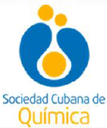Executive Secretary

7th International Chemistry Symposium
SIQ 2019
The increasing contamination of natural ecosystems and the imminent danger that this represents for life demands the implementation of efficient decontamination methods. The adsorption processes based on natural clays have proven to be the best alternative for the elimination of dangerous and little biodegradable substances such as organic dyes, key components in the production of textiles, leather and paper [1]. The use of these adsorbents is very stimulating given their low price, abundance and innocuousness with the environment [2]. The main objective of this work is to demonstrate the potential use of Cuban natural clays, palygorskite and bentonite, in the elimination of hazardous organic dyes from wastewater, as is the case of Congo red - dye recognized by carcinogenic and mutagenic toxic effects. The influence of parameters such as pH, initial concentration of dye and equilibrium time during adsorption were also evaluated. All materials were characterized physically and chemically through X-ray diffraction (XRD), attenuated total reflectance spectroscopy (ATR) and thermogravimetric techniques (TG) in order to understand clay-dye interactions [3]. The results suggested the "optimal" environmental conditions in which clays can have their maximum adsorption capacity. Considering the influence of the type of clay structure, palygorskite and bentonite-rigid and swelling, respectively-, a comparative analysis of adsorption was carried out. In general, this research demonstrates the efficiency of Cuban clays studied as potential adsorbents (> 90% efficiency) of Congo red organic dye.
The increasing contamination of natural ecosystems and the imminent danger that this represents for life demands the implementation of efficient decontamination methods. The adsorption processes based on natural clays have proven to be the best alternative for the elimination of dangerous and little biodegradable substances such as organic dyes, key components in the production of textiles, leather and paper [1]. The use of these adsorbents is very stimulating given their low price, abundance and innocuousness with the environment [2]. The main objective of this work is to demonstrate the potential use of Cuban natural clays, palygorskite and bentonite, in the elimination of hazardous organic dyes from wastewater, as is the case of Congo red - dye recognized by carcinogenic and mutagenic toxic effects. The influence of parameters such as pH, initial concentration of dye and equilibrium time during adsorption were also evaluated. All materials were characterized physically and chemically through X-ray diffraction (XRD), attenuated total reflectance spectroscopy (ATR) and thermogravimetric techniques (TG) in order to understand clay-dye interactions [3]. The results suggested the "optimal" environmental conditions in which clays can have their maximum adsorption capacity. Considering the influence of the type of clay structure, palygorskite and bentonite-rigid and swelling, respectively-, a comparative analysis of adsorption was carried out. In general, this research demonstrates the efficiency of Cuban clays studied as potential adsorbents (> 90% efficiency) of Congo red organic dye.
About The Speaker

Lic. Sheila Alfonso Martín






